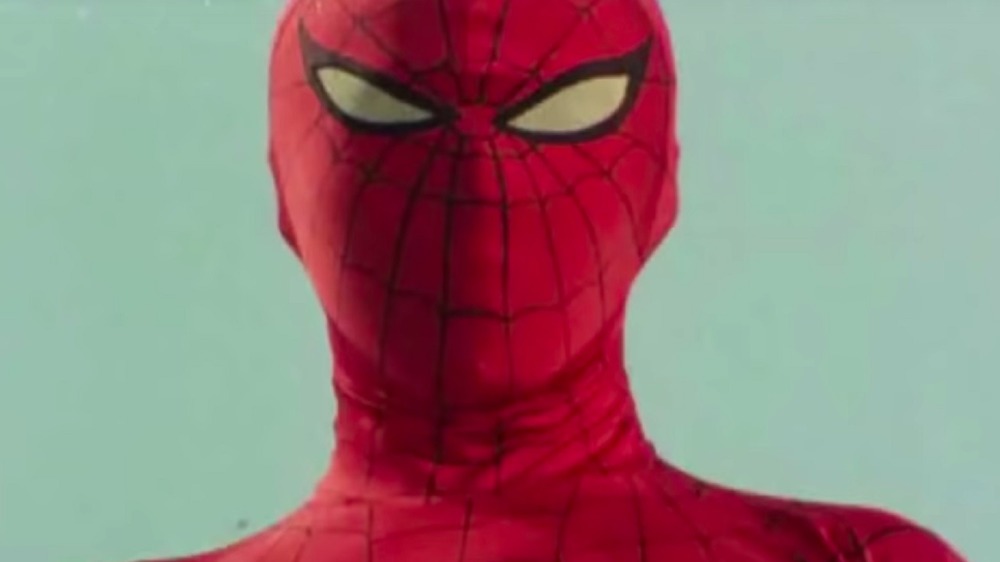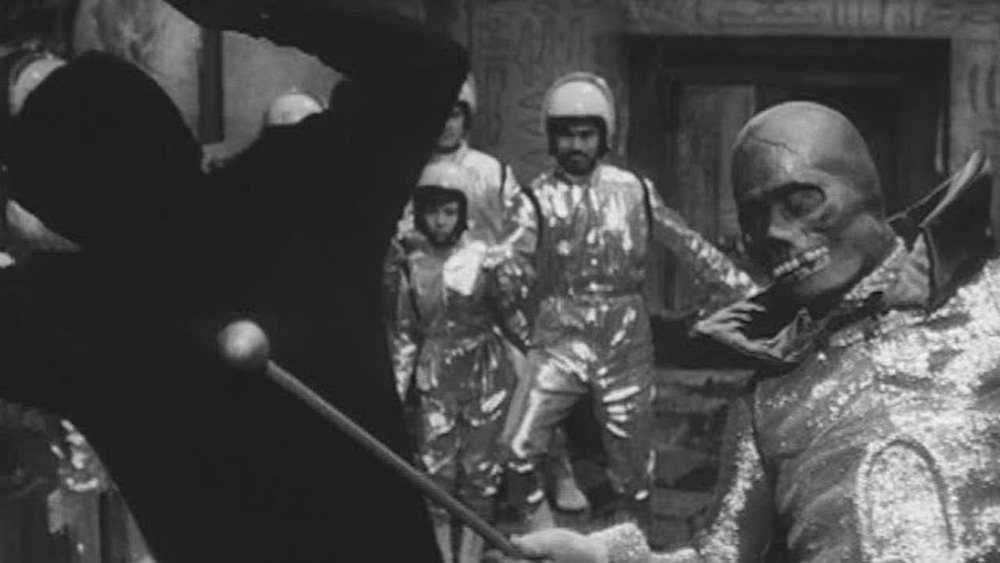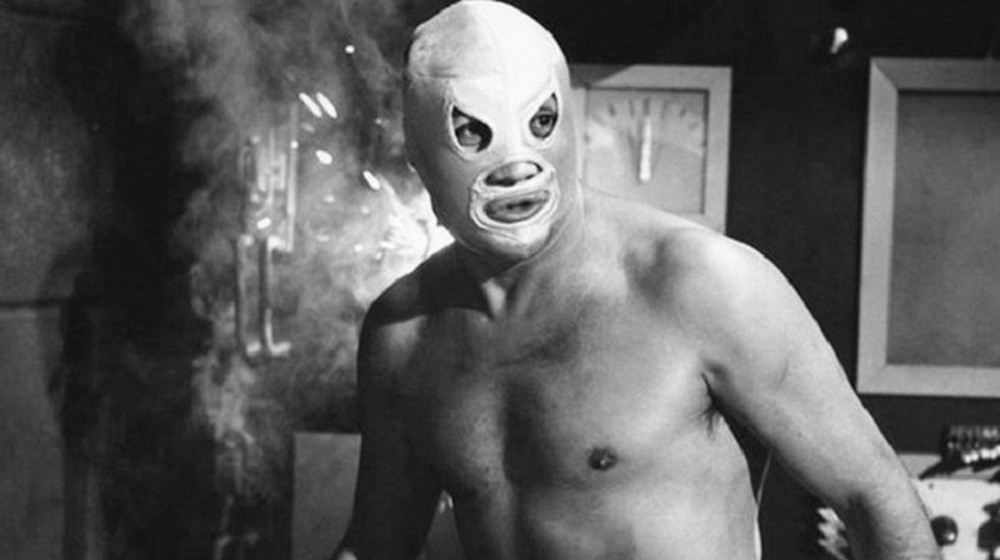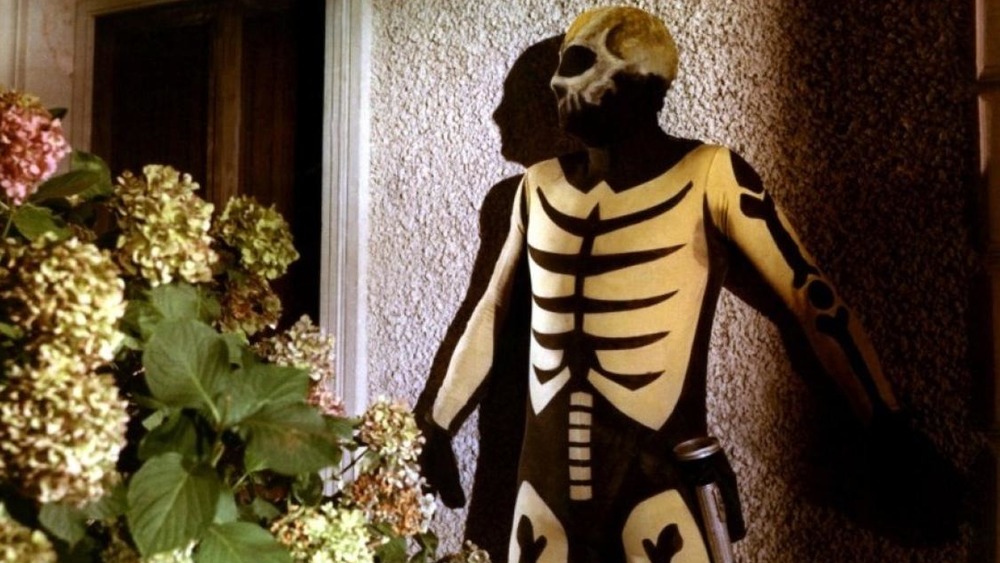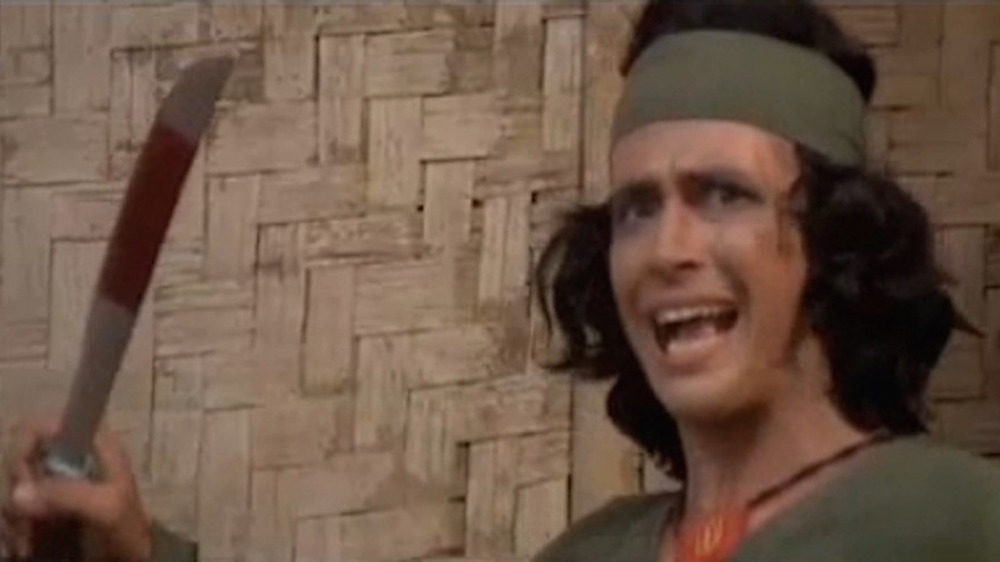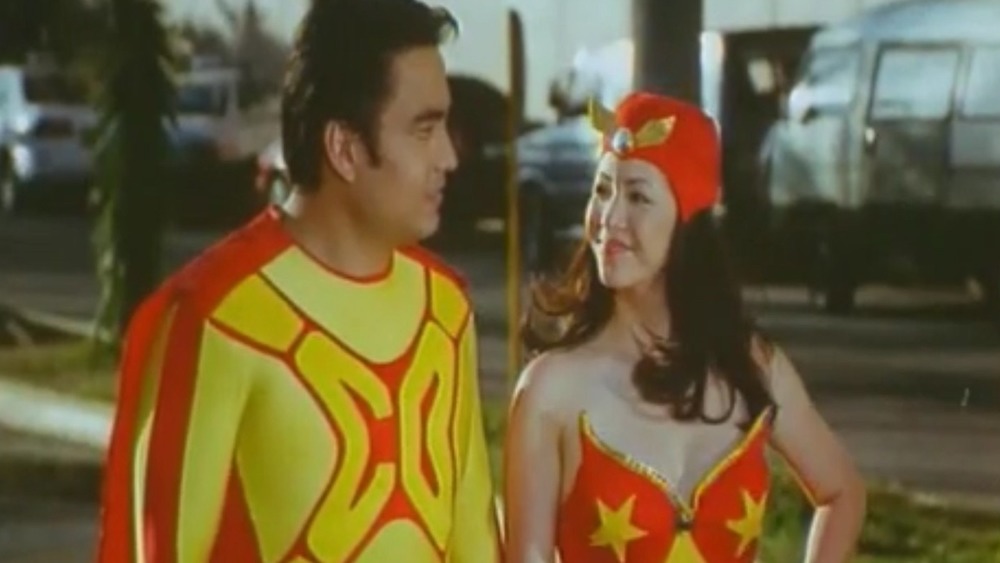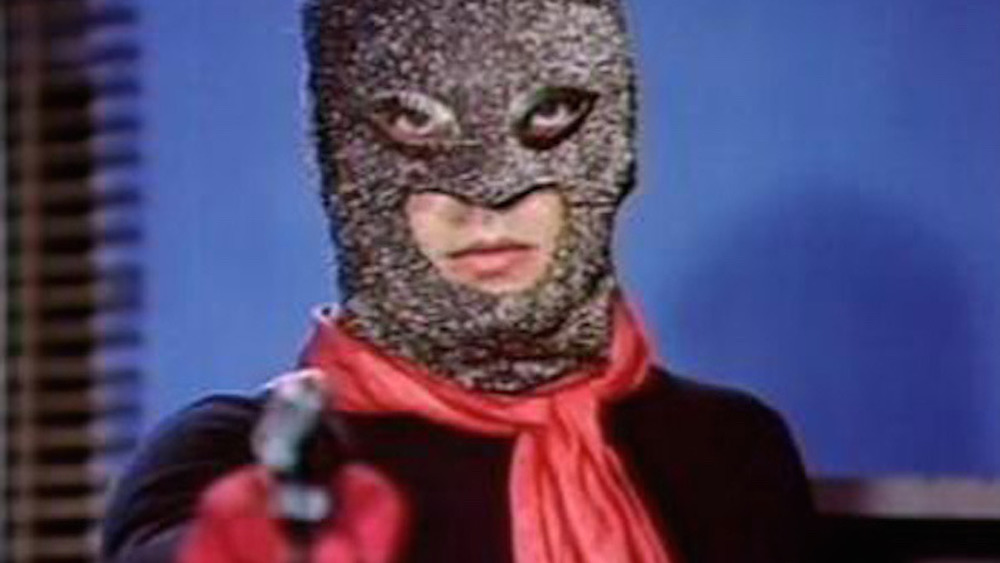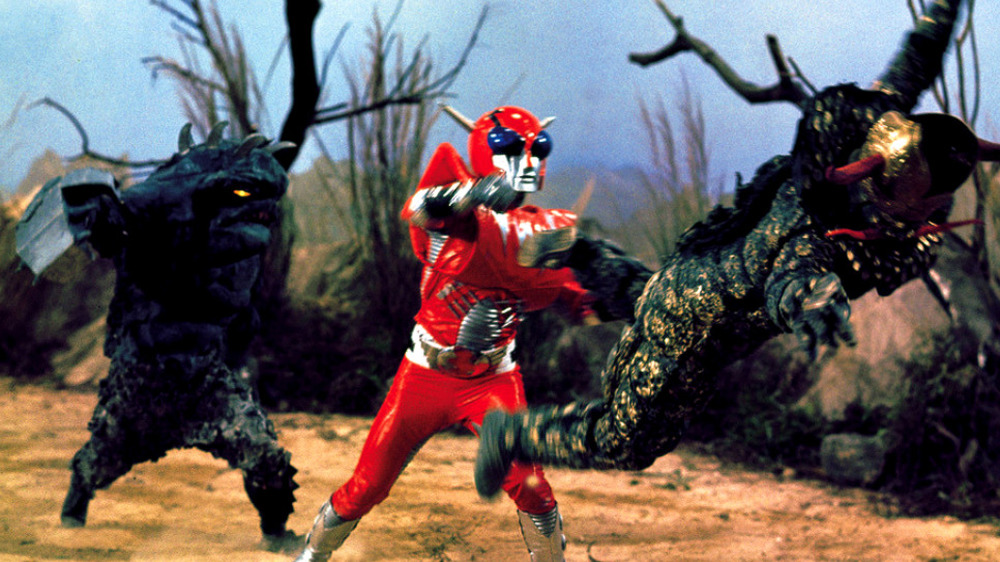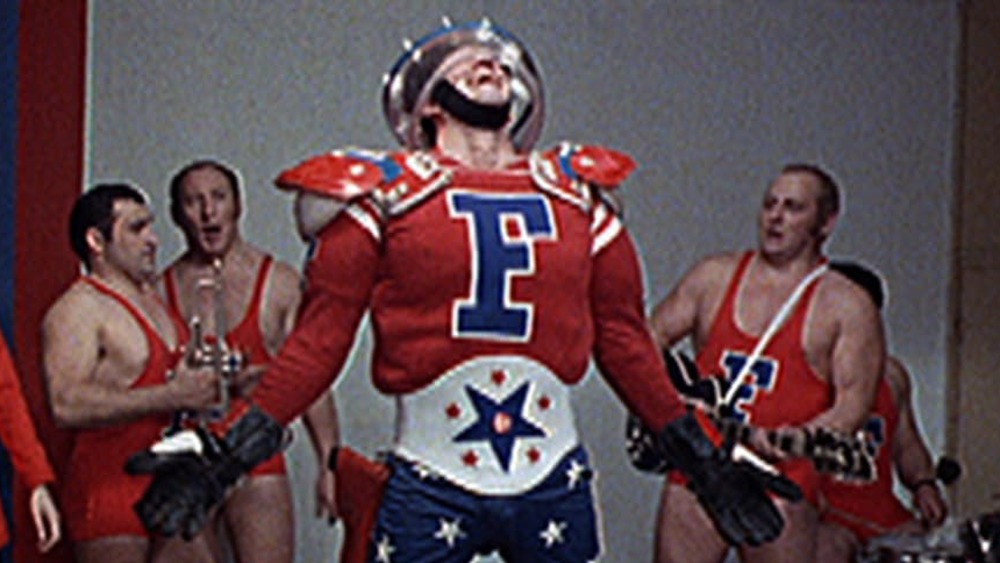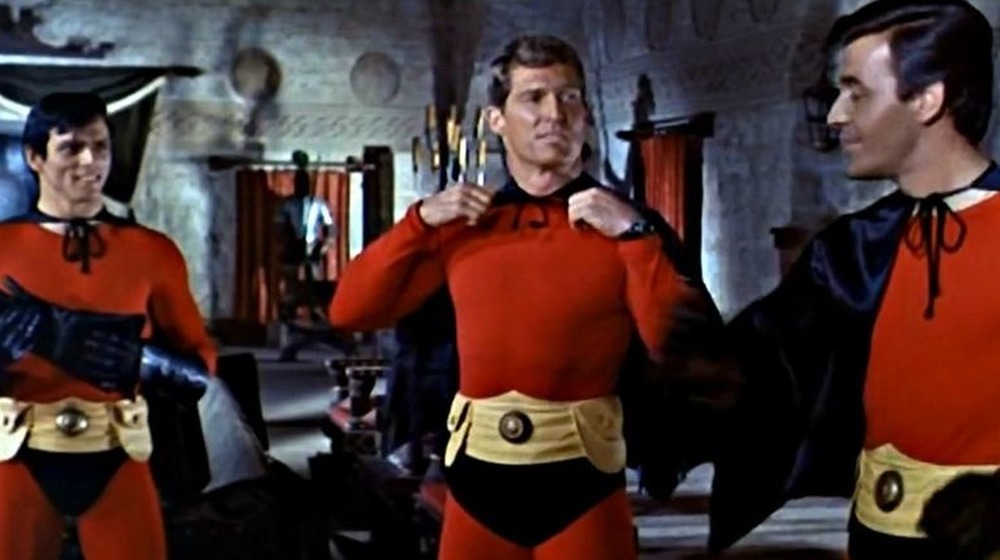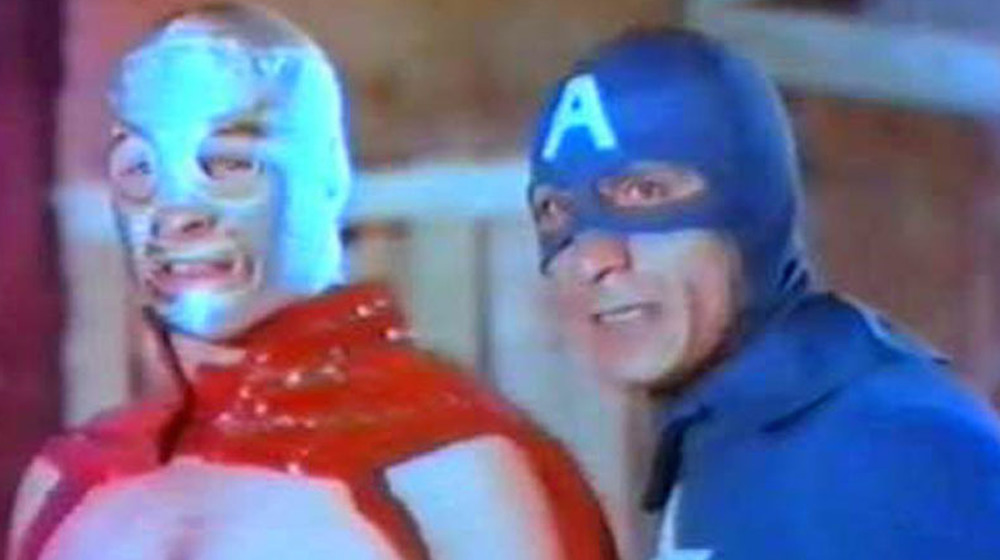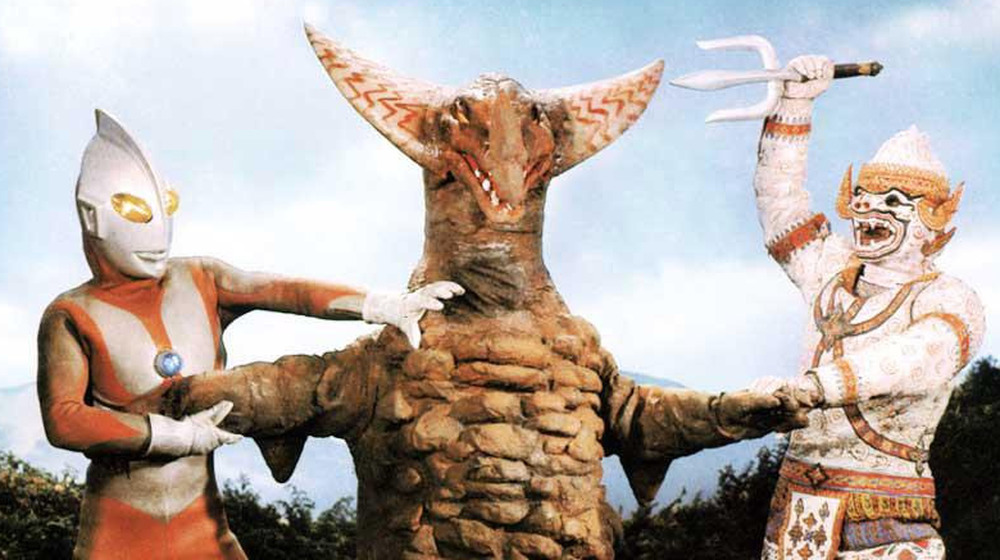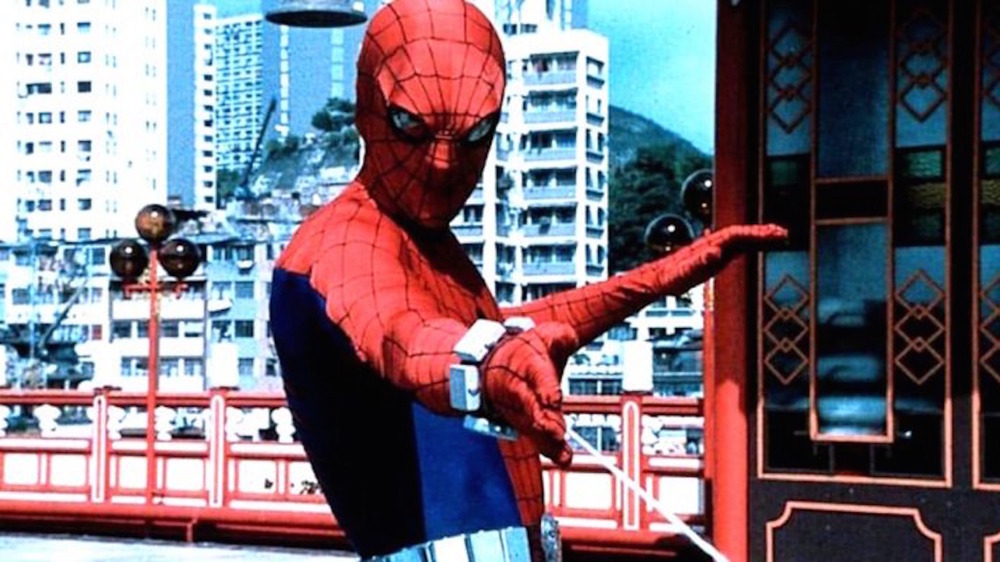The Strangest Movie Superheroes From Around The World
Superheroes are intended to represent an ideal — the best (or worst) of what we could attain if we followed their examples. And these incredible individuals aren't just limited to one country. Big and small screen superheroes have inspired audiences across the world, spurring artists, writers, and filmmakers to create their own heroes. As you might assume, this has resulted in some truly fascinating films.
Some of the most offbeat global superhero movies are well-known to true fans, such as Johnnie To's Heroic Trio, Luc Besson's Valerian and the City of a Thousand Planets, and the slew of high-energy, monster-and-robot Japanese flicks that arrived in the wake of Ultraman, such as the Super Sentai/Power Rangers franchise. But beneath all that, there are hundreds — if not thousands — of totally bizarre fantasy and sci-fi films from Europe, Asia, Africa, and South America, all anchored around costumed crusaders fighting for justice (or, at the very least, our attention for 90 minutes).
Cultural customs, filmmaker tastes, and budget have rendered each of these movies unique in their own way, either as innovative interpretations of the American superhero idiom or as strange (make that very strange), singular visions. Following are some of the weirdest, wildest superhero pictures from all corners of the globe.
Golden Bat is a bit different than Batman
Ogon Bat, or Golden Bat, isn't only the oldest superhero on this list but, quite possibly, one of the oldest in the world. Debuting in 1931, seven years before Superman, Golden Bat may look imposing -– he has a skull face, a frightening laugh, and lives in a sarcophagus — but he's a 100% hero from Atlantis, who woke after 10,000 years to fight modern evil and, in particular, the multi-eyed Dr. Nazo and his crime league.
A popular character in kamishibai –- a sort of traveling show that combines storytelling and pictures –- Golden Bat has been featured in three live-action films, a live-action television series from South Korea, and an action-packed 1966-67 animated series which aired all over the world ... except the United States. The year 2021 marks the 90th anniversary of Golden Bat's appearance, so if you want to see him in action, your best bet is 1966's The Golden Bat, a black-and-white, live-action feature, heavily influenced by the spy craze of the period, with '70s martial arts superstar Shinichi "Sonny" Chiba (Kill Bill) as a brawny Golden Bat.
El Santo mixes superheroes with lucha libre
While many of the actors playing superheroes in this list gave committed performances, it's unlikely that any of them remained in role once the cameras stopped rolling. But for four decades, that's essentially what Rodolfo Guzmán Huerta did as El Santo. A phenomenally popular wrestler in his native Mexico, Santo parlayed his hero status in the ring into a successful, three-decade run as the star of his own comic book and, from 1958 to 1982, as a champion for good in 52 delirious movies that pitted him against Dracula, Frankenstein's monster, werewolves, zombies, aliens, witches, and the mummies of Guanajuato, among others.
In all of these adventures, as well as his public events and (reportedly) even private company, Santo kept his features concealed behind his trademark silver mask, which he removed in public only once, as part of a television appearance one week before his death in 1984. The American equivalent of such commitment to a persona would be if Dwayne Johnson not only retained his WWE Rock persona but also played the Rock in all of his films and remained in character for interviews, press appearances, and when he went to the supermarket (or whatever he does during his off hours).
Santo's legacy in the ring and his long movie career has earned him enduring icon status in Mexico and beyond. Look no further for proof than his brief animated cameo in Pixar's Coco, where he's celebrated as a cultural figure deserving the same adoration afforded to Frida Kahlo and actor/singer Pedro Infante.
Kriminal and Killing are the good bad guys
A sadistic yet stylish master criminal from the sexy, violent Italian comics known as fumetti, Kriminal -– a British thief dressed in an eye-popping black-and-yellow catsuit and skull mask –- wreaked brutal vengeance against the ruthless businessmen who destroyed his family, as well as an array of thugs and femme fatales. Kriminal's homicidal tendencies were toned down over the course of the series' ten-year run, and his screen debut in 1966's Kriminal reflects that turn towards a less macabre tone.
Directed by prolific jack-of-all-genres filmmaker Umberto Lenzi, the screen Kriminal (Dutch actor Roel Bos under his screen name Glenn Saxson) is more 007 than sociopath, and the emphasis here is on capers and action set-pieces than violence. Kriminal was successful enough to generate a sequel, 1967's The Mark of Kriminal, which opens with a nod to the character's vicious side. He frightens old women to death and collects on their insurance policies, but eventually, the character slides back into a caper adventure, this time in pursuit of missing art works.
Another Italian comic antihero in a skeleton suit, Killing –- who, true to his name, spent much of his long print run indiscriminately murdering the innocent and guilty alike -– was the subject of several unauthorized and trashy Turkish film adaptations beginning with 1967's Kilink Istanbul'da (Killing in Istanbul), and his adventures included face-offs with the likes of Frankenstein's monster.
The Warrior gives us Indonesian magic and superhero mayhem
A popular folk hero in comic books by the late Indonesian artist Djair Warni, Jaka Sembung's adventures mixed history with fantasy by pitting his prodigious strength and invincibility against both the Dutch, who colonized his country in the 19th century, and an array of monsters and magicians. Sembung's first feature film outing was 1981's The Warrior, starring burly action star Barry Prima as the freedom-fighting strongman. Veteran Indonesian genre director Sisworo Gautama Putra stacks the deck against Sembung, who fights not only the Dutch army –- who at one point poke out his eyes — but also a fire-breathing, bulletproof bruiser (who beats up a bull) and a wizard who can detach his limbs and head and use them as weapons.
The Warrior is gory and frantic and makes a solid case for both Jaka Sembung and Prima as world-class tough guys. Prima would return to the role in three subsequent films while also carving out his own niche as Indonesia's top martial arts/action hero.
Captain Barbell is a costumed crusader from the Philippines
One of the Phillippines' most popular and longest-running superheroes, Captain Barbell was the creation of writer Mars Ravelo and artist Jim Fernandez. Often described as the Filipino Superman, Captain Barbell is more closely aligned with DC's Shazam. His 1963 debut in Pinoy Komiks outlined the basic template for the character — a young, physically weak boy, wishing to become strong in order to fend off bullies (in this case, his brothers), comes across a magic barbell that transforms him into a powerful superhero.
As with many comic book characters, different characters wore the Captain's cape and tights (he went shirtless until the 1980s and then added a yellow shirt to echo the costume worn in films and TV shows), but each followed a similar arc of discovering the barbell and developing powers. The Captain made his first of five forays into feature films in 1964, most notably a 2003 feature with actor turned senator Bong Revilla that also featured the heroine Darna. Three television series followed, including the most recent — and to date — last Captain Barbell series in 2011.
Deathless Devil is a strange superhero pic from Turkey
Moments after the credits roll on the 1973 Turkish action-fantasy Yilmayan Seytan (The Deathless Devil), the young hero, Tekin (Kunt Tulgar), discovers that not only has the notorious supervillain, Doctor Satan (Erol Tas), killed his scientist father, but he also learns that his dad was actually his foster father and that his real pop was the hooded superhero Bakirbas, aka Copperhead! Determined to avenge both fathers, Tekin dons Copperhead's spangle-covered mask and, with the help of his alcoholic sidekick, Bitik (Erol Gunaydin) –- who dresses like Sherlock Holmes –- gets revenge on Doctor Satan and his army of clunky robots.
As with many Turkish exploitation films, The Deathless Devil lifts much of its needlessly complicated premise from another picture. Here, it's the 1940 American serial Mysterious Doctor Satan, from which it also borrows a near-relentless pace and a complete disregard for logic and continuity. However, it's hard to find fault with a movie that features room-wrecking brawls, explosions, and plot twists every few minutes, all set to (undoubtedly unauthorized) American soundtrack cuts and pop hits.
Inframan is a Hong Kong extravaganza of sci-fi action
Hong Kong's Shaw Brothers Studio, which made some of the most iconic martial arts films of the 1970s, made a brief foray into sci-fi with 1975's The Super Inframan, aka Infra-Man. It's arguably one of the best Asian superhero films ever, bristling with outrageous creatures and non-stop action. As Roger Ebert noted, in the first four minutes of the movie, Hong Kong is destroyed, an earthquake rumbles, mountains collapse, and an ancient evil queen unleashes a horde of monsters and mutants. The only thing standing in her way is Inframan, a solar-powered superhero equipped with death rays and martial arts moves, as well as a bite-sized nuclear reactor.
What follows is barely controlled mayhem as Inframan punches and blasts his way through the monster horde –- octopus creatures, giant bugs, spring-loaded robots –- to face off against the whip-wielding demon princess, Elzebub (or Dragon Mom, as she's known in the English-language dub). Interestingly, Mystery Science Theater 3000 creator Joel Hodgson noted on Twitter that Felicia Day's Kinga Forrester and her Boneheads/Skeleton Crew were nods to the princess and her skeleton-suited henchmen.
Mr. Freedom is an all-American super-psycho
Acclaimed American photographer and documentarian William Klein directed Mr. Freedom, a French film that's a surreal and savage takedown of American politics in the 1960s that critic Jonathan Rosenbaum described as "conceivably the most anti-American movie ever made."
American actor John Abbey plays the title role, a police officer who moonlights as Mr. Freedom, a hard-nosed, helmeted superhero who's sent to France by his superior (Donald Pleasance) to prevent the spread of communism. Once there, the influence of foreign heroes –- Super French Man (Serge Gainsbourg), who's sympathetic to Russia's Muzhik Man (Philippe Noiret) and Red China Man (a talking inflatable dragon) — sends him into a tailspin of white nationalist and xenophobic fervor, which whips up a section of the French population into a murderous frenzy.
Riots eventually drive Mr. Freedom to break out "The Big One," a nuclear device designed to save the country by destroying it. Biting satire disguised as psychotronic pop art, Mr. Freedom is a product of its time, but in tweaking the nose of America's most inflexible qualities, it also shines a harsh light on them.
Three Fantastic Supermen, one amped-up movie
In addition to its countless gunslingers, mythological musclemen, and superspies, Italian popular cinema of the 1960s and 1970s also had its share of costumed superheroes. One of the country's more energetic caped crusader pics was 1969's The Three Fantastic Supermen, which stands out from its competition by virtue of its breezy, cartoonish tone, as well as its breakneck stunts.
American actor Brad Harris stars as an FBI agent who recruits a pair of acrobatic criminals (model Tony Kendall and stuntman Aldo Canti), known for their outrageous gadgets (suction-cup boots, a weaponized yo-yo) to battle Golem, a supervillian whose world-domination plans involve the Universal Reproducer. Its a device that, as its name indicates, can make copies of anything. The actors' near-maniacal good cheer and bright red supersuits will inspire more than a few chuckles, but director Gianfranco Parolini balances these moments with some impressive action set pieces, including one where a Superman drops from a building and bounces (via an unseen trampoline) into the back seat of a car.
The Three Fantastic Supermen was followed by a series of increasingly absurd sequels that sent the heroes to Japan, the '84 Olympics, and the Old West (via time machine).
The fake Avengers assemble in 3 Dev Adam
There are quite a few Turkish exploitation filmmakers who didn't give a lira about such issues as copyrights, and they made unauthorized carbons of popular film and properties at a dizzying rate. The best-known of these is undoubtedly Dunyayi Kurtaran Adam, better known as Turkish Star Wars for its brazen lift of footage and effects from the George Lucas film. There's also a Turkish Star Trek, a Turkish Exorcist, and even a Turkish E.T.
Somewhere further along the production chain, but no less bizarre (perhaps even more so), is 3 Dev Adam (Three Mighty Men) or, as many have taken to calling it, "Turkish Captain America and El Santo vs. Spider-Man." To wit, a flabby Spider-Man — without radioactive powers and sporting a shabby green suit — runs a crime operation that handles everything from robbery to gruesome murders. Opposing him is the First Avenger himself ... well, a scrawny, shield-free Steve Rogers whose fighting skills are best summed up in a scene in which one of Spider-Man's henchmen gets cold-cocked by accidentally running into Cap's butt.
He's clearly not up for any solo hero business, so actor turned director T. Fikret Ucak also enlists a rip-off version of El Santo to back his play against Spidey. Senseless to the point of near-hallucination, 3 Dev Adam might be the best prank you ever play on your Marvel-loving friends. ("Hey, did you see the new Cap and Spider-Man movie?")
Monkeying around with Hanuman vs. 7 Ultraman
The monkey god Hanuman is a revered deity in the Hindu religion and culture, one depicted in art, festivals, and celebrations throughout South and Southeast Asia. He's also enjoyed a long and diverse screen career in both live-action films –- the legendary wrestler/filmmaker/Indian parliamentarian Dara Singh played him in 1976's Bajrangbali –- and numerous animated series and features, most of which emphasize Hanuman's bravery and quick-wittedness.
A more capricious and downright manic version of the god is seen in Hanuman vs. 7 Ultraman, a bizarre 1974 Thai-Japanese production which partners him with members of Eiji Tsuburaya's Ultraman family. Here, a young boy murdered by antiquities thieves is brought back to life as Hanuman, whose scowling face and trident is in line with traditional Thai depictions of the character. He eventually gets even with the thieves –- by crushing them –- before teaming with six (not seven) Ultra Brothers to battle monsters from the Ultra and Mirrorman universes. (That's probably why the film is also called The 6 Ultra Brothers vs. the Monster Army. Titles are weird.)
The fight is jarringly brutal. The monsters are clearly outnumbered, and Hanuman — who can't stop jumping, scratching, and fidgeting — slices off the heads and limbs of two monsters, splits a third down the middle, and rips the skin off a fourth. Hanuman later teams up with another super team, Toei's Kamen Riders, for the even weirder Hanuman and the Five Kamen Riders in 1974. In short, if you're looking for monkey madness and violent action, the Hanuman films are up your alley.
The Japanese Spider-Man might go Hollywood soon
Tucked away in the avalanche of information about the much-anticipated sequel to Spider-Man: Into the Spider-Verse was a brief exchange between a Twitter user and producer Phil Lord about Supaidaman, who's better known to Spider-obsessives as Japanese Spider-Man. When asked about the character appearing in the sequel, Lord noted that he had been designed, which may give this incarnation of the Marvel hero his widest audience outside of Asia.
Created in 1978 as part of a licensing deal between Marvel and the Toei Company (from which Marvel acquired two robots for its Shogun Warriors title), Supaidaman bore little resemblance to Peter Parker's secret identity beyond his wall-crawling and web-spinning abilities. The series' hero, motorcross racer Takuya Yamashiro, gains his powers from the dying occupant of a spaceship from Planet Spider. He also gets a sweet flying car and control of Leopardon, a giant, sword-swinging robot he uses to battle alien heel Professor Monster and his outlandish army of creatures.
Though popular during its year-long run on Japanese television, Supaidaman went largely unseen in the United States, save for grey market sources and a 2009 run on Marvel's web site, but he and Leopardon appeared in comic book form as part of Marvel's Spider-Verse imprint in 2014, while eagle-eyed viewers caught a glimpse of the mecha on Miles Morales' sketchbook in the Spider-Verse feature.
